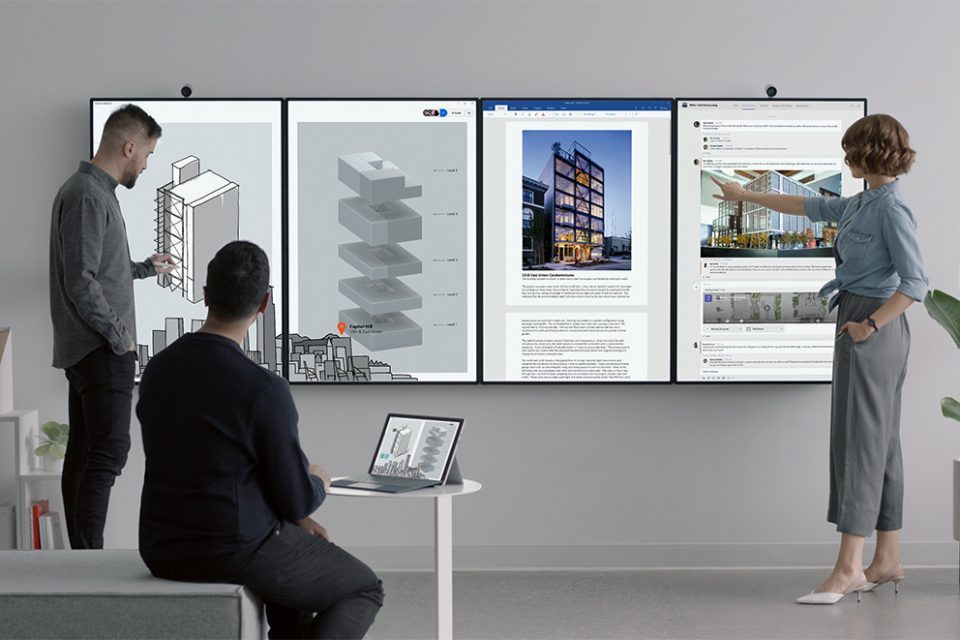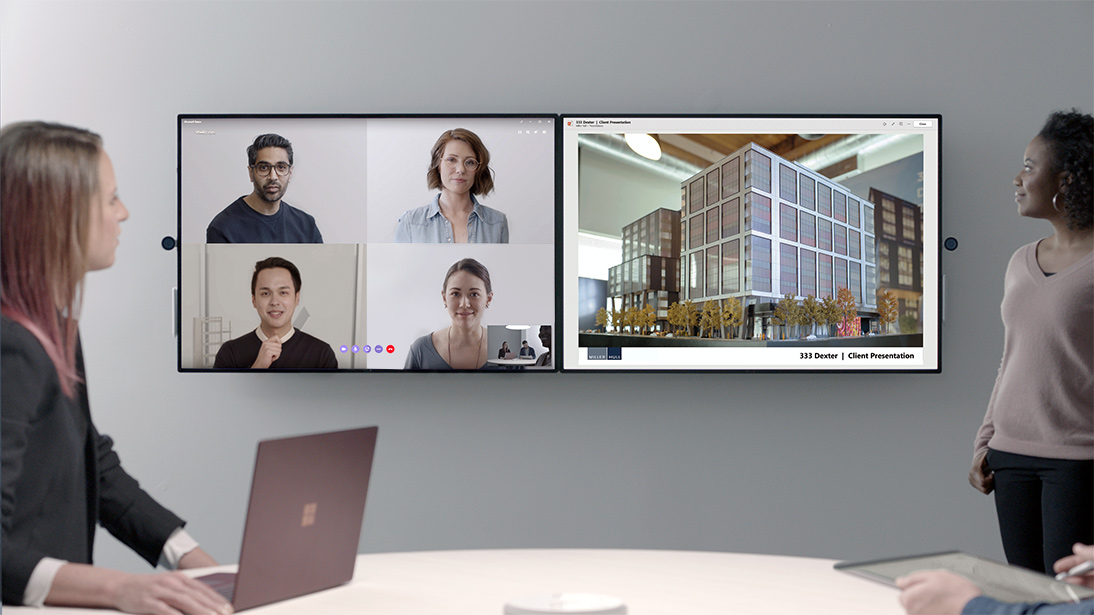A new Surface Hub that can be rotated 90-degrees and attached to up to three other Hubs has been unveiled by Microsoft.
The Surface Hub 2 has been designed to help people work together and “get out of their seats, ideate, create and dynamically collaborate as a team, regardless of location”, Panos Panay, Microsoft’s Chief Product Officer, wrote in a blog post.
Unlike the original Surface Hub, which was released in 2015, the new device can be rotated, so users can work on the 50.5-inch 4K+ multi-touch PixelSense Display in either landscape or portrait mode. As the cameras, speakers and microphones are built into the device, they will pivot, too.
Four Hubs can also be connected together in a move known as “Tiling”, creating one canvas for a PowerPoint presentation or video call, for example.
“Tiling is one of my favourite features on Surface Hub 2,” Panay wrote. “Seeing four of the beautiful Surface Hub 2s lined up together not only makes an undeniable visual impact, it can also have a profound impact on what groups can accomplish together, allowing users to display multiple pieces of content side by side. Imagine how much your team could get done being able to work simultaneously across Microsoft Whiteboard, PowerBI, PowerPoint and a full-view video call.”
This will let people have “face-to-face” meetings from anywhere in the world, he added.
Microsoft has also teamed up with workplace experts Steelcase to give the Surface Hub 2 a system of rolling stands and easy-to-use mounts, making it easier to move the device around offices. Multiple people can then sign in to access their documents at the same time, allowing them to share ideas and work on one screen using the Surface pen or fingers.
“Today’s most effective businesses have a team-based, collaborative culture and place an emphasis on enabling creativity and productivity. In fact, companies that promote collaborative working are five times as likely to be high performing,” Panay added.
“It’s not just that how we work is changing, where we work is changing too. The environment around us is shifting – towards open offices, huddle rooms and team work spaces – and in three years half the global workforce will be mobile. It’s an exciting time to be in the devices business, because the creation of new form factors and software experiences will not only lead us to work in new ways, but also in new spaces designed for collaboration.”
“There is a need for a device built for teams and designed for these new environments. To help people collaborate whether they are in the office, at home, or travelling the world. To move beyond just passing along information, to a world where they are collaborating real-time, in an efficient and intuitive way.”
The Surface Hub 2 will be available to buy in 2019, with prices released at a later date.
The original Surface Hub was unveiled at Microsoft’s Windows 10 Devices Event three years ago and is available in a 55-inch version and an 84-inch model
It is currently being used by students at the Royal Academy of Music, in London, to compose music while video-calling their professor; while the University of Bristol (above) is using the device to further its biomedical and clinical sciences research.







